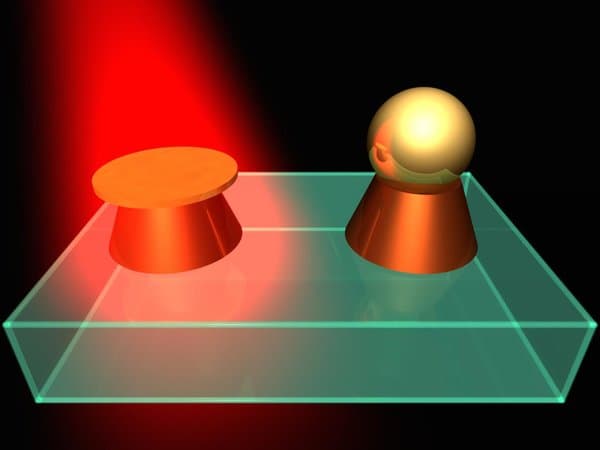Scientists Propose Novel Method For Nanoscale Manipulation Of Light
Performing nano-scale integration on optical devices has already succeeded in optimising the contemporary data storage systems. The functioning of CDs, DVDs and Blue ray discs depend on a LASER beam which encrypts digital data on an optical disc. With increasing technical advancements, the amount of data recorded per disc increased exponentially. Recently, a group of researchers from the ITMO University in Saint Petersburg has officially introduced a new method to customize light in hybrid metal-dielectric nanoantennas, that will eventually encode ultradense data with controlled input light.
Nanoantennas, a device that localises light and compresses it in the nanoscale, overpower electrons in terms of storage capacity, energy efficiency and data transfer speed. They cited a pioneering method in their research paper which talks about incorporation of arrays of hybrid nanoantennas, that can accurately manipulate light according to a predefined program. Owing to the two stage treatment comprising advanced lithography and exposure to femtosecond LASER, nano-antennas have grown to possess extraordinary data storage capacity.

LASER exposure to create nano-structure
The group explained that nano-antennas were the most apt choice to help them fulfill their research objective, as it can gear up data storage capacity and controllability with respect to contemporary data storage devices. Statiscally, contemporary optical devices can store information at a density of 10 Gbit/square inch. Additionally, the hybrid nano-antennas with little modifications could be used in different sectors manufacturing hybrid metasurfaces, waveguides and compact sensors.
The internal core of the aforementioned device consists of a truncated silicon cone with a thin golden disk located at the top, in which the device on top could be reshaped as per requirement without affecting the silicone cone. The change, if made, helps to alter optical properties corresponding to the resonance overlap between the silicon wafer and golden nanoparticles (AuNPs).
Researchers also explained that the AuNps adjusts according to the intensity of the incident laser beam. Shaped to cup or rod, these modified structures allow the method to engineer the required hybrid nanostructure. Dmitry Zuev, lead author of the study asserted that their research has targeted two interrelated fields namely plasmonics and all-dielectric nanophotonics, which in the future would be proven as a suitable method for data recording and related operations. The complete research has been published in the Advanced Materials Journal.
Source: #-Link-Snipped-#
Nanoantennas, a device that localises light and compresses it in the nanoscale, overpower electrons in terms of storage capacity, energy efficiency and data transfer speed. They cited a pioneering method in their research paper which talks about incorporation of arrays of hybrid nanoantennas, that can accurately manipulate light according to a predefined program. Owing to the two stage treatment comprising advanced lithography and exposure to femtosecond LASER, nano-antennas have grown to possess extraordinary data storage capacity.

LASER exposure to create nano-structure
The internal core of the aforementioned device consists of a truncated silicon cone with a thin golden disk located at the top, in which the device on top could be reshaped as per requirement without affecting the silicone cone. The change, if made, helps to alter optical properties corresponding to the resonance overlap between the silicon wafer and golden nanoparticles (AuNPs).
Researchers also explained that the AuNps adjusts according to the intensity of the incident laser beam. Shaped to cup or rod, these modified structures allow the method to engineer the required hybrid nanostructure. Dmitry Zuev, lead author of the study asserted that their research has targeted two interrelated fields namely plasmonics and all-dielectric nanophotonics, which in the future would be proven as a suitable method for data recording and related operations. The complete research has been published in the Advanced Materials Journal.
Source: #-Link-Snipped-#
0
